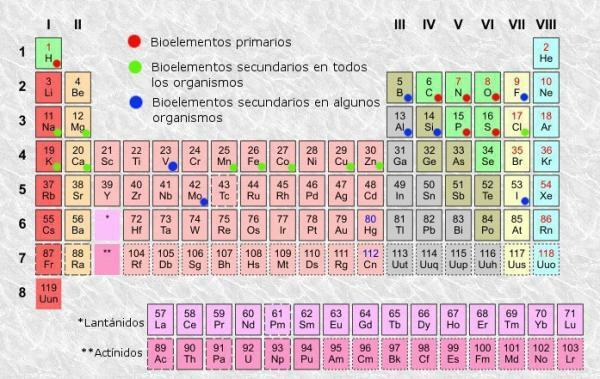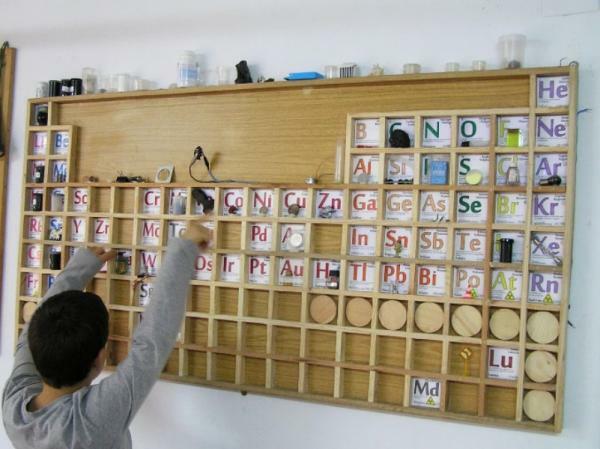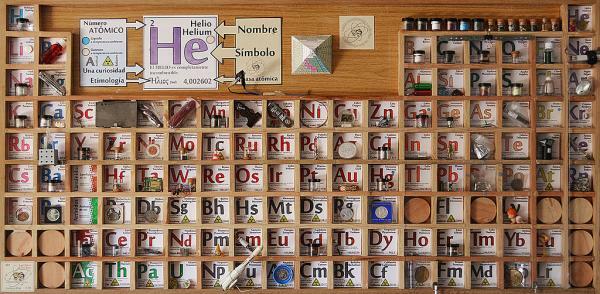What is the PERIODIC TABLE for?

The periodic table is a classification system for atomic elements invented in 1869 by the Russian chemist Dmitri Mendeleev and later reorganized and updated by other chemists until reaching his appearance current. Despite being a tool that has proven useful throughout history (that is why it has continued to be used and updated), it is a so tedious to learn and understand, which is why we have all asked ourselves the question "What is the table for? periodic? ".
If you want to know what is the periodic table for and why it is important to understand its properties, keep reading this lesson from a TEACHER.
Index
- Classification of the periodic table
- Finding the name or symbol of an element with the periodic table
- Know the atomic mass of an element
- Know the atomic number of an element
- Predict the atomic radius of an element
- Compare the ionization energy of two elements
- Finding the electronegativity of a chemical element
- Compare the electron affinity of two elements
Classification of the periodic table.
As in any table, in the periodic table of the elements we can distinguish columns (vertical) and rows (horizontal). In the periodic table there are 18 columns or groups and 7 rows or periods.
In addition, you will have been able to verify that normally within each of the boxes of the table, at least the following information appears:
- Chemical element symbol: abbreviations or signs that are used to identify the elements. They usually consist of one or two letters, of which the first is always capitalized.
- Chemical Element Name: name of the chemical element that corresponds to the upper abbreviation. It is usually below the symbol.
- Atomic number: total number of protons that each atom of that element has. It usually appears at the top left of the item box (or at the top right of more complete tables).
- Atomic mass: mass of an atom can normally be considered as the total mass of protons and neutrons in a single atom. It is arranged below the element name in the simplest tables, although in others it may appear in the upper right part of the element box.
There are periodic tables that include other types of more complex and specific information such as oxidation states (useful when formulating chemical compounds, for example), ionization energy, electronegativity, etc., but basic periodic tables usually give enough information and are usually enough for the average user, who from it can find out information like the one we tell you below.

Find out the name or symbol of an element with the periodic table.
Sometimes we know the chemical element symbol but we don't know his name. At other times, we know the chemical element name, but not its abbreviation or symbol. In fact, it is very easy that this ever happened to you in class.
In these cases, we can resort to a periodic table, without the need for it to be a complex one, and consult the missing data quickly and accurately.
Know the atomic mass of an element.
Sometimes we know the chemical element we are dealing with but we need to know its atomic mass, that is, how much an atom of that element weighs.
This information will be useful, for example, when performing the following tasks:
- Calculate the specific amount of a substance.
- Analyze the results obtained in the tests or experiments.
- Calculate the percentage of the mass.
- Understand the precise molar masses of complex molecules.
Know the atomic number of an element.
The atomic number is total number of protons that an atom of an element has. In an electrically neutral atom, other than a cation (positively charged, with one electron less than its normal state) or an anion (negatively charged, with one more electron than its normal state), the number of protons is equal to that of electrons.
The number of protons is the decisive factor when it comes to distinguishing one element from another, since the number of electrons or neutrons does not change the type of element.

Predict the atomic radius of an element.
The atomic radius is half the distance between the center of two atoms of the same element that barely touch each other. In this case, know the position of a chemical element on the periodic table it can help us find out its approximate atomic radius or compared to another element. For this, we have to know that the atomic radius:
- It increases as we move from the top to the bottom of the periodic table.
- It descends as we move from left to right through the periodic table.
In this way, calcium is smaller than rubidium but larger than iron.
Learn more about What is the atomic radius with this other video lesson from a TEACHER.
Compare the ionization energy of two elements.
The ionization energy is the energy required to remove an electron from an element's atom. In this case, if we know the position of two elements in the periodic table, we can know which element it will be easier to "remove" an electron. We will only have to take into account that:
- Ionization energy decreases as it moves up and down the periodic table.
- Ionization energy increases as you move from the left to the right of the periodic table.
Between beryllium and oxygen, oxygen has more ionization energy. If we compare oxygen and sulfur, which is in the same group but in the next period, oxygen also has higher ionization energy since it is higher on the periodic table.
Find the electronegativity of a chemical element.
Electronegativity is the ability of an atom to attract electrons. In practice this translates to the ability to form a chemical bond. To know if a chemical element will have a great capacity to form a chemical bond or not, we only have to take into account the pattern that follows in the periodic table, that is:
- It descends as it moves up and down.
- It increases as you move from left to right.
As in the previous case, oxygen is more electronegative than beryllium and sulfur since it is further to the right than the first and higher than sulfur.

Compare the electron affinity of two elements.
The Electronic affinity is he change in energy that a neutral atom undergoes when it attracts an electron to become a negative ion. In this case, the electronic affinity does not vary as exactly as in the previous cases, although we can say that, in general, the electronic affinity:
- It rises, in the same period, from left to right.
- Ascend, in the same group, from the bottom up.
If you want to read more articles similar to What is the periodic table for?, we recommend that you enter our category of The atom.
References
Do you have any input or comment on the uses of the periodic table? Feel free to leave it in our comment section! Did you like this article? You can also leave your rating below!
